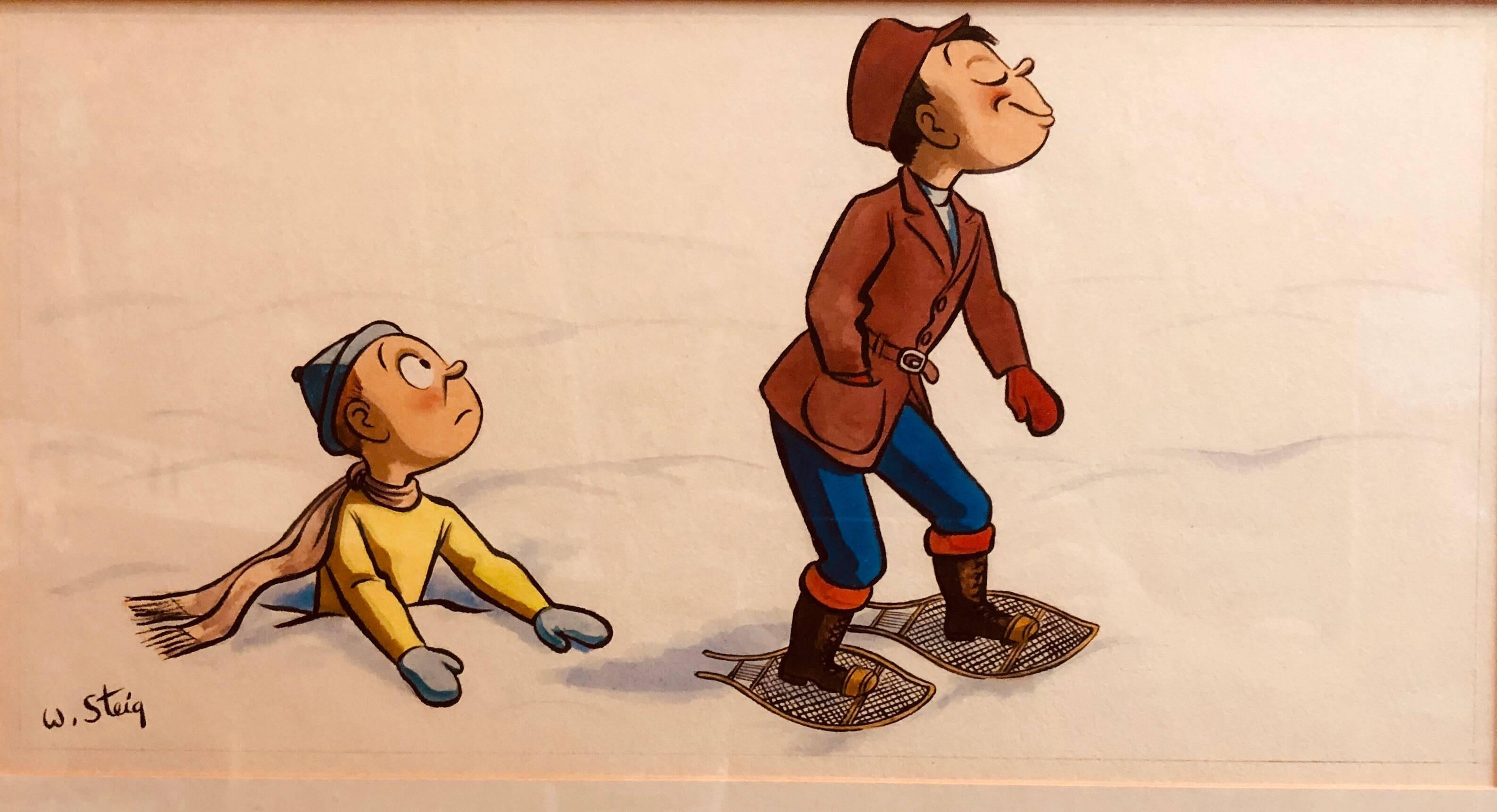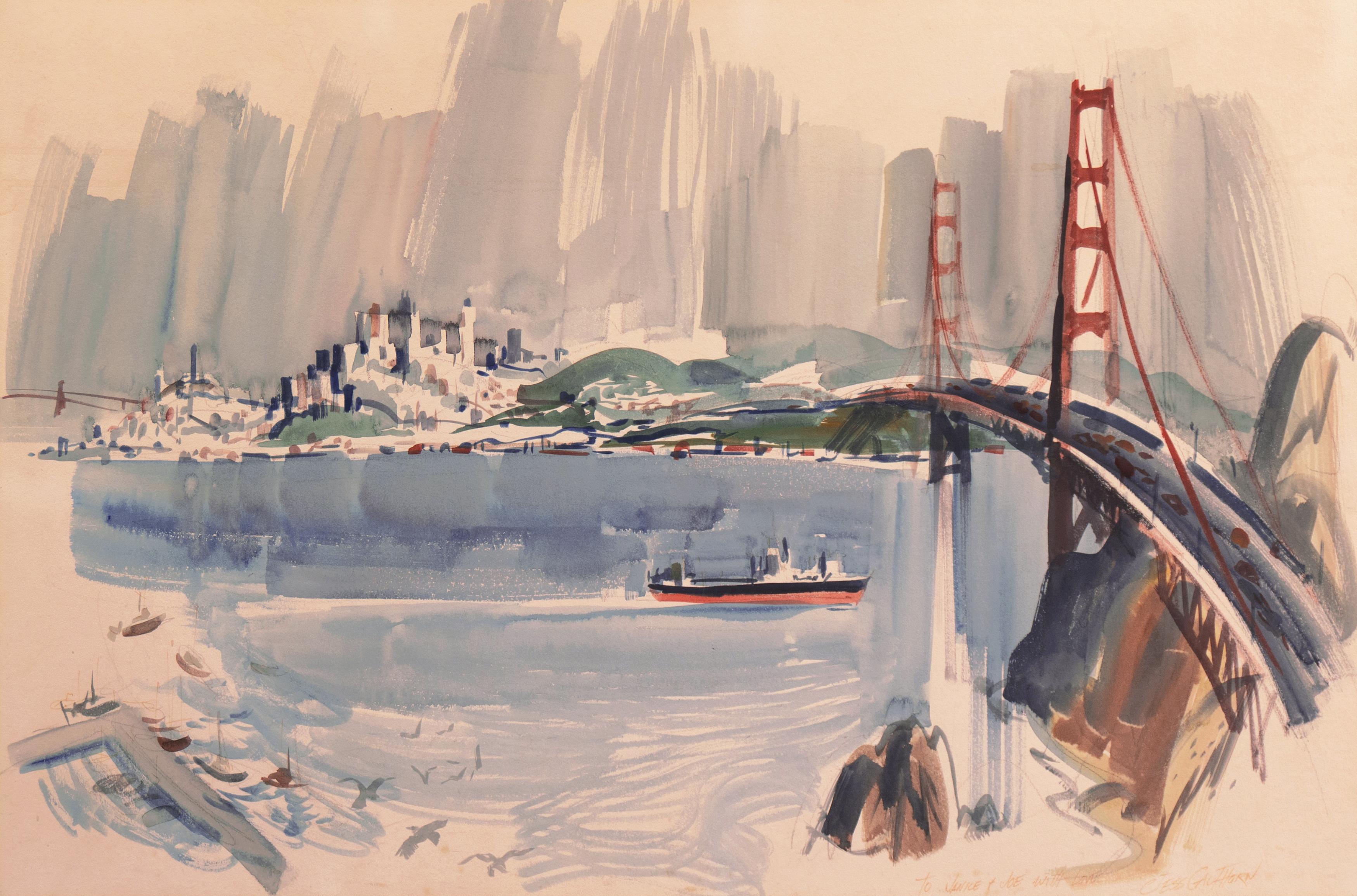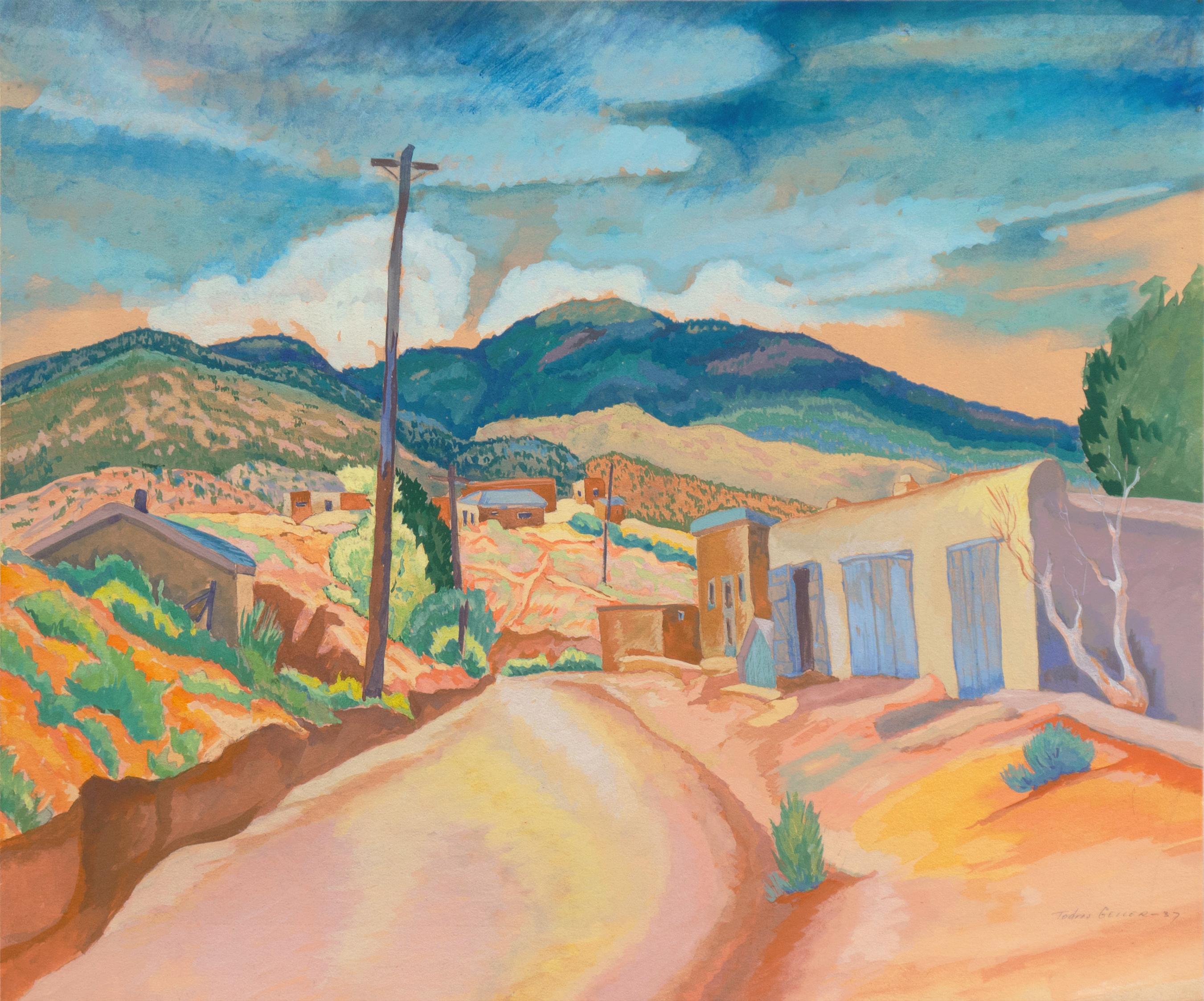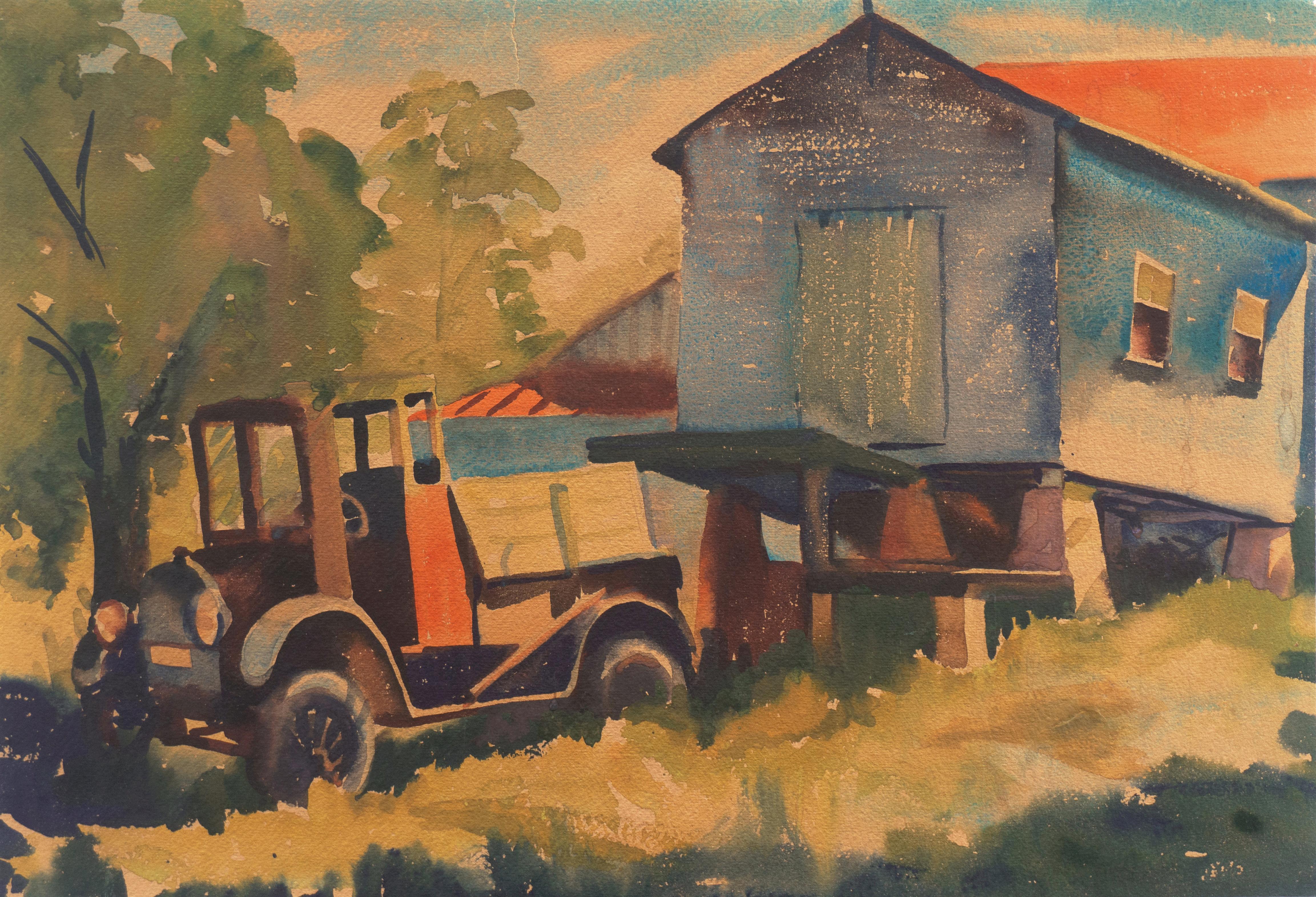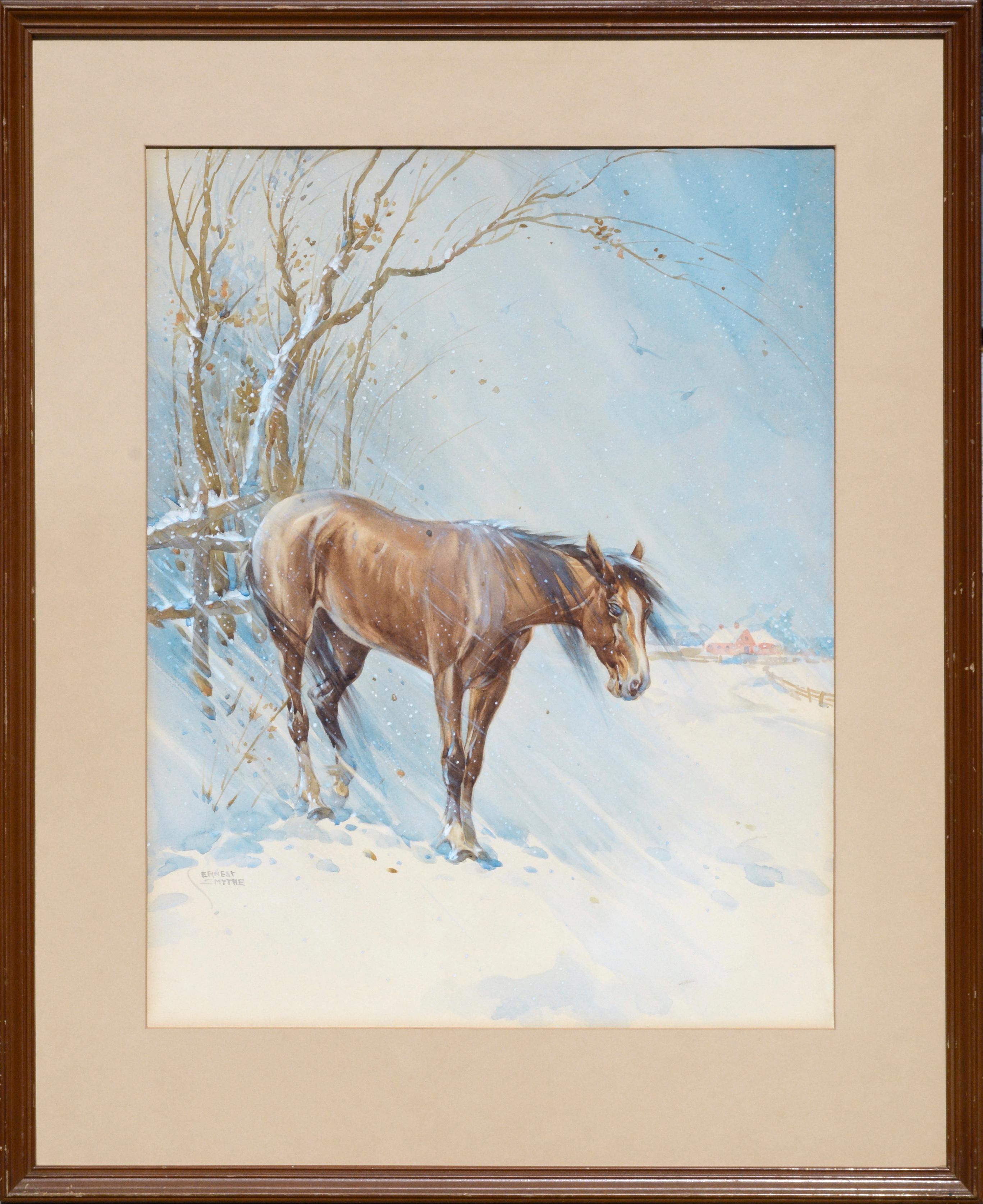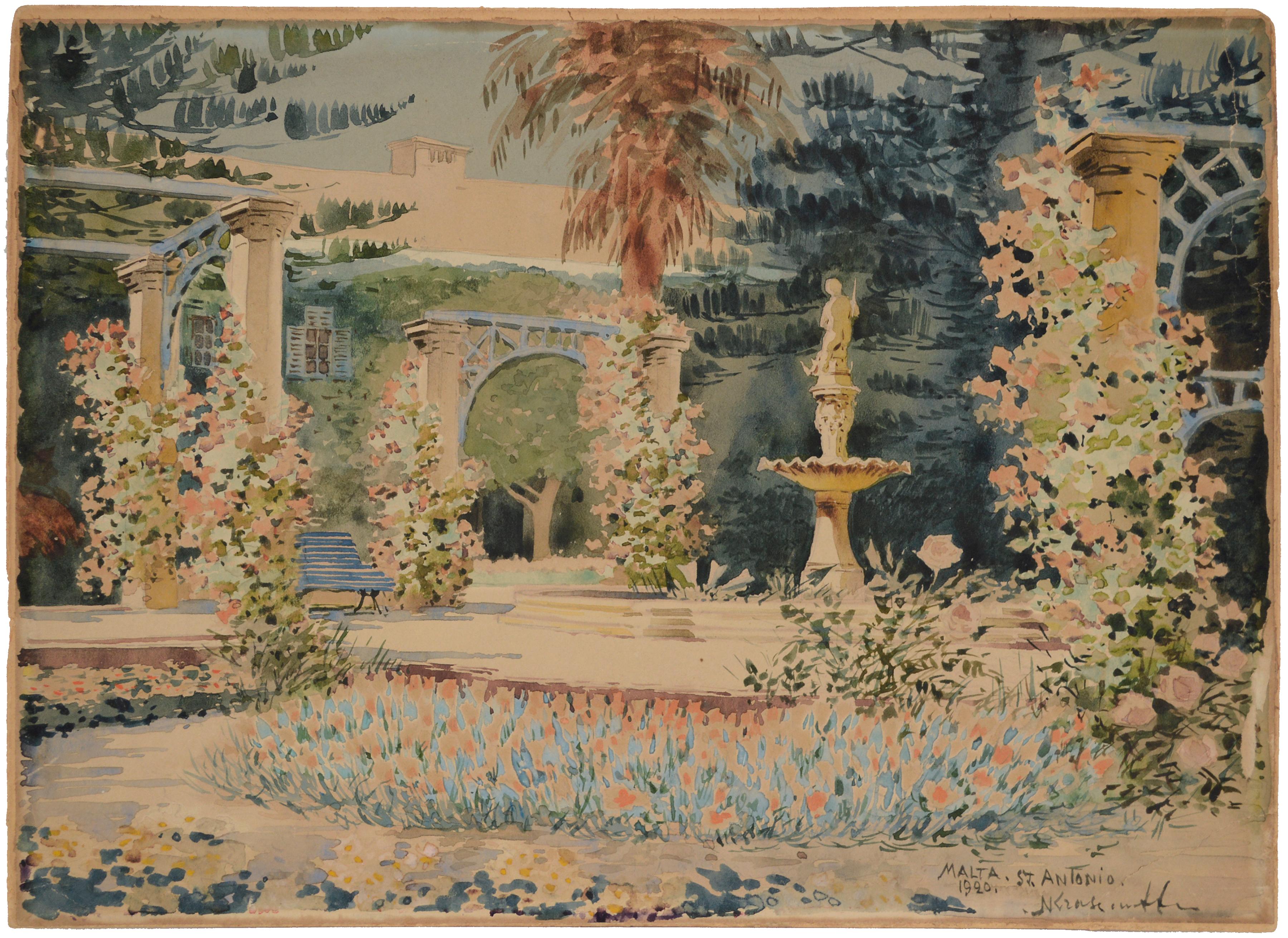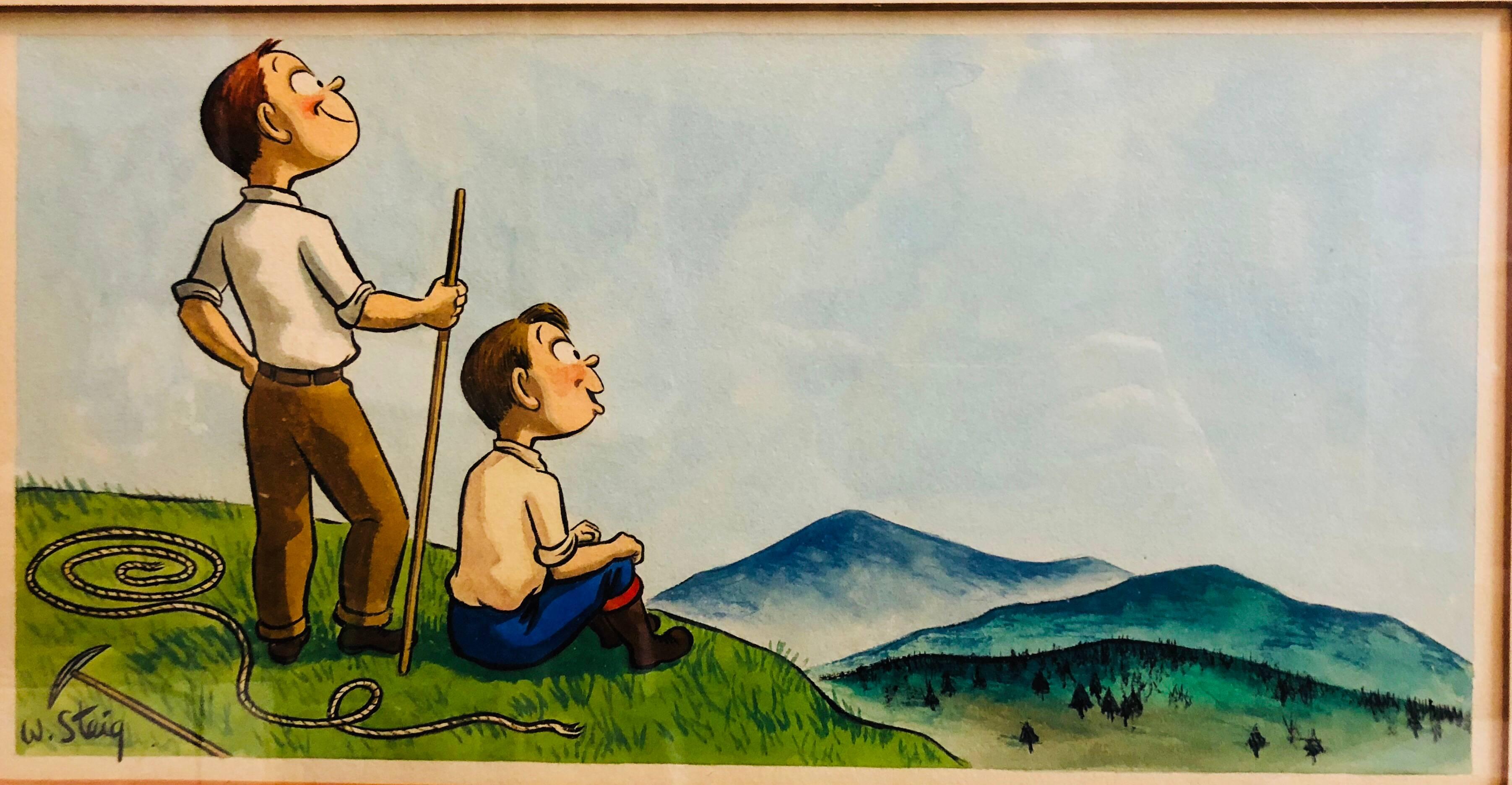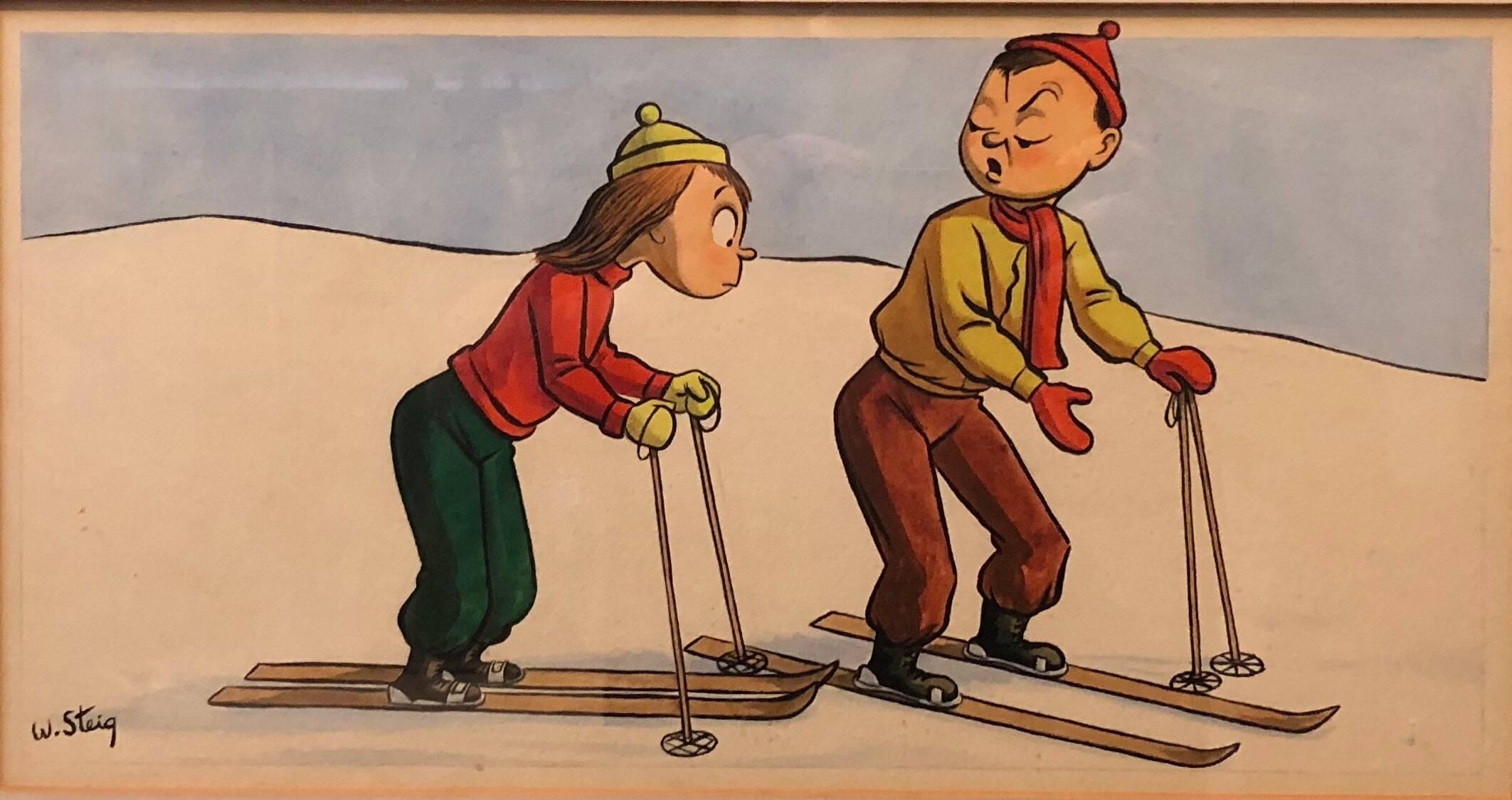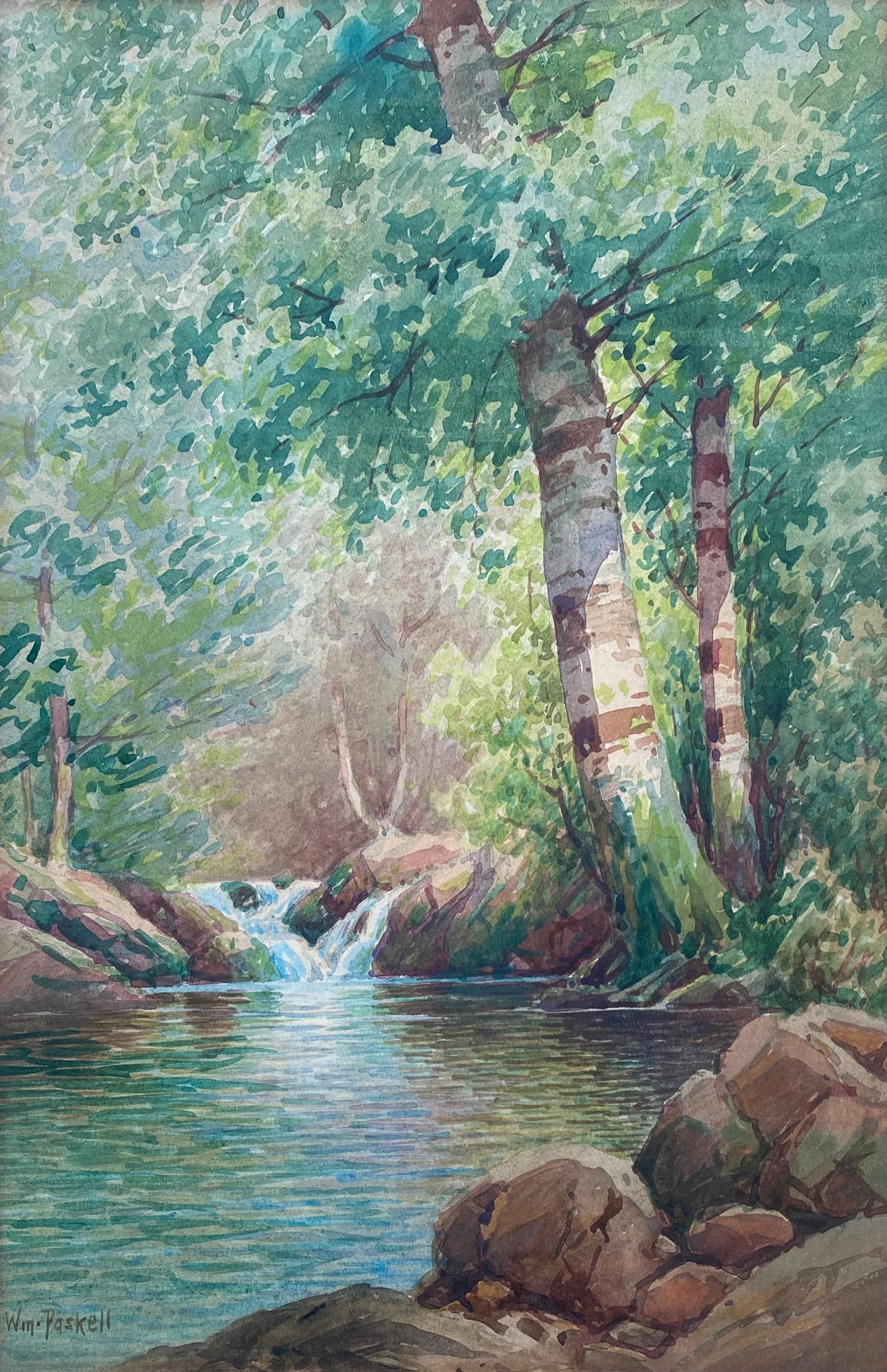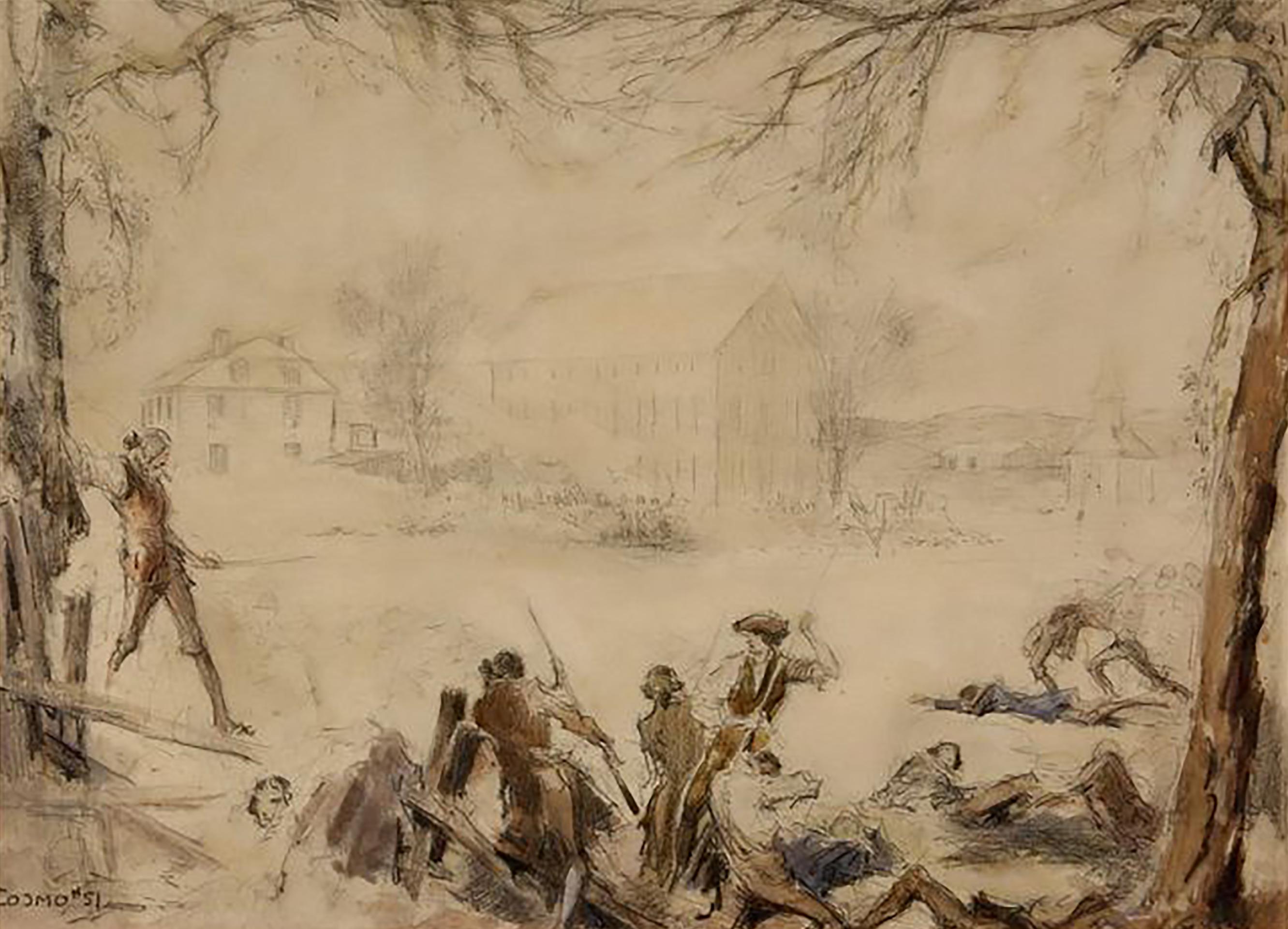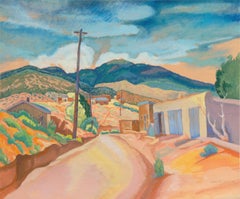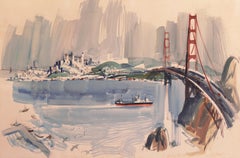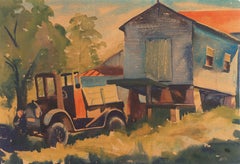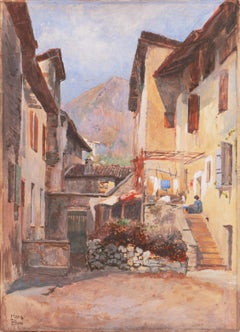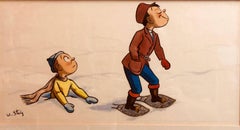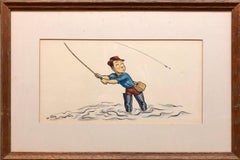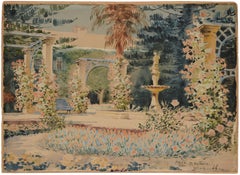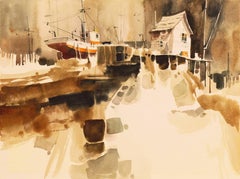
'Fishing Boat in Dry Dock', AWS, CWS Artist, California Tonalist view
Want more images or videos?
Request additional images or videos from the seller
1 of 8
Ritchie A. Benson'Fishing Boat in Dry Dock', AWS, CWS Artist, California Tonalist viewCirca 1955
Circa 1955
About the Item
- Creator:Ritchie A. Benson (1941 - 1996, American)
- Creation Year:Circa 1955
- Dimensions:Height: 7.75 in (19.69 cm)Width: 9.69 in (24.62 cm)
- Medium:
- Movement & Style:
- Period:
- Condition:age-toning; unframed.
- Gallery Location:Santa Cruz, CA
- Reference Number:1stDibs: LU3442514721
About the Seller
5.0
Platinum Seller
Premium sellers with a 4.7+ rating and 24-hour response times
Established in 1982
1stDibs seller since 2013
731 sales on 1stDibs
Authenticity Guarantee
In the unlikely event there’s an issue with an item’s authenticity, contact us within 1 year for a full refund. DetailsMoney-Back Guarantee
If your item is not as described, is damaged in transit, or does not arrive, contact us within 7 days for a full refund. Details24-Hour Cancellation
You have a 24-hour grace period in which to reconsider your purchase, with no questions asked.Vetted Professional Sellers
Our world-class sellers must adhere to strict standards for service and quality, maintaining the integrity of our listings.Price-Match Guarantee
If you find that a seller listed the same item for a lower price elsewhere, we’ll match it.Trusted Global Delivery
Our best-in-class carrier network provides specialized shipping options worldwide, including custom delivery.More From This Seller
View All'South-Western Landscape', Art Institute of Chicago, Whitney Museum, WPA, Odessa
By Todros Geller
Located in Santa Cruz, CA
Signed 'Todros Geller' (Russian-American, 1889-1949) and dated 1937
An elegant and painterly, southwestern landscape painted when the artist was 48 years old.
Born in Vinnytsia, now in the Ukraine, Todros Geller first studied in Odessa before moving to Canada. He continued his studies in Montreal (1906) and, subsequently, at the Art Institute of Chicago with George Bellows and John Norton. Geller exhibited widely and with success including, from 1925, at the Chicago Art Institute as well as at the Riverside Museum (New York, 1939), the New York World's Fair (1939) and at the Whitney Museum of American Art (1941) in addition to other national institutions.
Geller was the recipient of numerous prizes, medals and juried awards and his work may be found in private and public collections including the permanent collection of the Art Institute of Chicago. He was a member of professional associations including the Artist's Union, the Artist's Congress and the Chicago Society of Artists, which he also served as president. During the the 1930's, Geller was an active participant in the Federal Art Project (WPA) in Illinois and his large-scale murals and stained glass windows may be found in Chicago and Detroit as well as Tel-Aviv. We are pleased to offer this elegant, South-Western landscape painted when the artist was 45.
Reference:
Todros Geller Archives, Spertus Museum of Judaica, Chicago; Sparks, Esther. "A Biographical Dictionary of Painters and Sculptors in Illinois 1808-1945." Diss., Northwestern University, 1971, p. 390; Yochim, Louise Dunn. Role and Impact: The Chicago Society of Artists. Chicago: 1979, pp. 28, 44, 238; Mavigliano, George J. and Richard A. Lawson. The Federal Art Project in Illinois 1935-1943. Carbondale: Southern Illinois University Press, 1990, p. 120; Dijkstra, Bram. American Expressionism: Art and Social Change 1920-1950. New York: Harry N. Abrams, Inc., 2003, p. 155. Chicago Modern...
Category
1930s Modern Landscape Drawings and Watercolors
Materials
Watercolor, Gouache, Illustration Board
'San Francisco from Marin', Seattle, SAM, Frye Museum, Golden Gate, Sausalito
Located in Santa Cruz, CA
Signed lower right, 'Jess Cauthorn' (American, 1923-2005), painted circa 1960.
A respected fine artist art teacher who transformed the art-school scene...
Category
1960s Modern Landscape Drawings and Watercolors
Materials
Watercolor, Gouache, Illustration Board
'Old Reliable', Early American Modernist, Jalopy, Model T Ford Flatbed Truck
Located in Santa Cruz, CA
An American School watercolor showing an old Ford Model T flatbed truck backed up to a barn in a rural landscape.
A well-composed work paint...
Category
1920s Modern Landscape Drawings and Watercolors
Materials
Watercolor, Gouache, Illustration Board
'Alpine Landscape in Piedmont', Munich School Professor
Located in Santa Cruz, CA
Signed lower left, 'Hans Blum' (German, 1858-1942) and painted circa 1911.
Provenance: Exhibited, 'Jubiläums- Ausstellung der Münchener Künstler-Genossenschaft', München 1911 ('Anniversary Exhibition of the Munich Artists' Cooperative'). Label verso.
Hans Blum studied at the Munich Academy of Fine Arts with Ludwig von Löfftz and Ludwig Lindenschmit the Younger. He first worked as a portraitist in Nuremberg but later turned to genre painting, which he often carried out in the style of plein-air painting. Blum exhibited his Italian alpine...
Category
1910s Impressionist Landscape Drawings and Watercolors
Materials
Paper, Watercolor, Gouache, Illustration Board
'The Little Bandit', California Raccoon, National Watercolor Society
By Jack Bevier
Located in Santa Cruz, CA
Signed lower right, 'Jack B. Bevier' for Jack Bernard Bevier (American, 1923-1996) and painted circa 1985.
Born in Michigan, Bevier was primarily a watercolor painter who specialized in rural country landscapes, seascapes of the Monterey Peninsula, boat and harbor scenes.
Jack Bevier was educated in Ann Arbor, Michigan before serving 3 years in the Army Air Corp during World War II. After the war he attended the Art Institute of Chicago where he graduated with honors. After six years of painting and working in the commercial art business in Chicago, Bevier moved to California. He settled in the Salinas area on the Monterey Peninsula in 1956 and operated a gallery in Carmel, California for many years.
His works have been exhibited widely and with success including at the National Watercolor Society...
Category
1980s Realist Landscape Drawings and Watercolors
Materials
Gouache, Illustration Board
'Stonehenge at Sunset', Royal Academy, RSBA, Benezit, Wiltshire, Druid, Celtic
By Robert Gallon
Located in Santa Cruz, CA
Signed lower left, 'R. Gallon' for Robert Gallon (English, 1845-1925) and painted circa 1880.
This well-listed landscape and seascape painter maintained a studio in St John's Wood, ...
Category
Late 19th Century Romantic Landscape Drawings and Watercolors
Materials
Watercolor, Illustration Board
You May Also Like
Whimsical Illustration "Snow" Cartoon, 1938 Mt Tremblant Ski Lodge William Steig
By William Steig (b.1907)
Located in Surfside, FL
Lighthearted Illustration of Outdoor Pursuits This one being cross country Snow Shoes signed "W. Steig"
Provenance: from Mrs. Joseph B. Ryan, Commissioned by ...
Category
1930s American Modern Figurative Drawings and Watercolors
Materials
India Ink, Watercolor, Illustration Board
Whimsical Fishing Illustration Cartoon 1938 Mt Tremblant Ski Lodge William Steig
By William Steig (b.1907)
Located in Surfside, FL
Lighthearted Illustration of Outdoor Pursuits This one of a fisherman signed "W. Steig"
Provenance: from Mrs. Joseph B. Ryan, Commissioned by Joe Ryan for the bar at his ski resort, Mount Tremblant Lodge, in 1938.
Mont Tremblant, P.Q., Canada
Watercolor and ink on illustration board, sights sizes 8 1/2 x 16 1/2 in., framed.
In 1938 Joe Ryan, described as a millionaire from Philadelphia, bushwhacked his way to the summit of Mont Tremblant and was inspired to create a world class ski resort at the site. In 1939 he opened the Mont Tremblant Lodge, which remains part of the Pedestrian Village today. This original illustration is on Whatman Illustration board. the board measures 14 X 22 inches. label from McClees Galleries, Philadelphia, on the frame backing paper.
William Steig, 1907 – 2003 was an American cartoonist, sculptor, and, in his later life, an illustrator and writer of children's books. Best known for the picture books Sylvester and the Magic Pebble, Abel's Island, and Doctor De Soto, he was also the creator of Shrek!, which inspired the film series of the same name. He was the U.S. nominee for both of the biennial, international Hans Christian Andersen Awards, as a children's book illustrator in 1982 and a writer in 1988.
Steig was born in Brooklyn, New York in 1907, and grew up in the Bronx. His parents were Polish-Jewish immigrants from Austria, both socialists. His father, Joseph Steig, was a house painter, and his mother, Laura Ebel Steig, was a seamstress who encouraged his artistic leanings. As a child, he dabbled in painting and was an avid reader of literature. Among other works, he was said to have been especially fascinated by Pinocchio.He graduated from Townsend Harris High School at 15 but never completed college, though he attended three, spending two years at City College of New York, three years at the National Academy of Design and a mere five days at the Yale School of Fine Arts before dropping out of each.
Hailed as the "King of Cartoons" Steig began drawing illustrations and cartoons for The New Yorker in 1930, producing more than 2,600 drawings and 117 covers for the magazine. Steig, later, when he was 61, began writing children's books. In 1968, he wrote his first children's book. He excelled here as well, and his third book, Sylvester and the Magic Pebble (1969), won the Caldecott Medal. He went on to write more than 30 children's books, including the Doctor DeSoto series, and he continued to write into his nineties. Among his other well-known works, the picture book Shrek! (1990) formed the basis for the DreamWorks Animation film Shrek (2001). After the release of Shrek 2 in 2004, Steig became the first sole-creator of an animated movie franchise that went on to generate over $1 billion from theatrical and ancillary markets after only one sequel. Along with Maurice Sendak, Saul Steinberg, Ludwig Bemelmans and Laurent de Brunhofff his is one of those rare cartoonist whose works form part of our collective cultural heritage.
In 1984, Steig's film adaptation of Doctor DeSoto directed by Michael Sporn was nominated for the Academy Award for Best Animated Short Film. As one of the most admired cartoonists of all time, Steig spent seven decades drawing for the New Yorker magazine. He touched generations of readers with his tongue–in–cheek pen–and–ink drawings, which often expressed states of mind like shame, embarrassment or anger. Later in life, Steig turned to children's books, working as both a writer and illustrator.
Steig's children's books were also wildly popular because of the crazy, complicated language he used—words like lunatic, palsied, sequestration, and cleave. Kids love the sound of those words even if they do not quite understand the meaning. Steig's descriptions were also clever. He once described a beached whale as "breaded with sand."
Throughout the course of his career, Steig compiled his cartoons and drawings into books. Some of them were published first in the New Yorker. Others were deemed too dark to be printed there. Most of these collections centered on the cold, dark psychoanalytical truth about relationships. They featured husbands and wives fighting and parents snapping at their kids. His first adult book, Man About Town, was published in 1932, followed by About People, published in 1939, which focused on social outsiders. Sick of Each Other, published in 2000, included a drawing depicting a wife holding her husband at gunpoint, saying, "Say you adore me."
According to the Los Angeles Times, fellow New Yorker artist...
Category
1930s American Modern Figurative Drawings and Watercolors
Materials
India Ink, Watercolor, Illustration Board
Mid Century Horse in Winter Landscape
By William Ernest Smyth
Located in Soquel, CA
Charming mid century watercolor painting of a horse in winter with a barn in the background by Ernest Smythe (American/England 1881-1950). Signed "ERNEST SMYTHE" in lower left corner. Presented in a tan mat with a wood frame and glass. Image size: 25"H x 19.75"W
As William Ernest Smyth, he was born at 13 Commercial Road, Ipswich on 9 April 1874 but was not baptised at St Michael's, Ipswich until 23 October 1885, when his birth date is given as 17 February 1874, youngest son of artist Thomas Smythe...
Category
Mid-20th Century Realist Animal Drawings and Watercolors
Materials
Watercolor, Illustration Board
$1,440 Sale Price
20% Off
"San Anton Palace Malta" Early 20th Cent. Garden and Fountain Watercolor Russian
Located in Soquel, CA
A significant early 20th century landscape watercolor of the paradisical gardens at San Anton Palace in Attard, Malta by Nicholas Krasnoff, 1920 (Russian, 1864-1939). This beautiful piece is a wonderful example of the renowned Russian architect's prized watercolors, created while he was exiled to Malta in the early 1920's. Depicting a lush garden full of blooming, colorful flowers and a stately fountain at the San Anton Palace in Malta, one can see the deft hand and attention to detail rendered by the proficient artist and architect's hand.
Signed "N. Krasnoff" lower right. Titled and dated "Malta, St. Antonio 1920".
Unframed.
Measures 10.25"H x 14.25"W.
Right corner has a crease from being bent.
Nikolay Petrovich Krasnov, also known as Nicholas Krasnoff or Peter Nicholas Krasnoff, was a Russian Serbian architect and painter. He served as Chief Architect of Yalta, Crimea (1887-1899). From 1922 he lived and worked in the Kingdom of Yugoslavia, and was a key figure in the architectural development of Belgrade. Attending the Moscow School of Painting, Sculpture and Architecture in 1876, aged 12. As a young artist he received patronage from Sergey Tretyakov, brother of the founder of Moscow's Tretyakov Gallery, and entrepreneur Petar Gubonyin.
In 1887 Krasnov became Chief Architect in Yalta. At the age of 23, Krasnov had large responsibility for the rapid growth of the city. He expanded the promenade, which by 1913 became the city's main street, before creating a new city plan in 1889 (including a new sewer system, planning regulations, new streets, prevention of unregulated construction, a school and children's hospital, and the construction of the Pushkin Boulevard). Two concrete bridges were built over the river, and the embankment strengthened. Krasnov also ran a private practice in Yalta until 1911. Among his most famous work is the Livadia Palace, later the location of the 1945 Yalta Conference. Designed over 60 buildings in Crimea, blending a modernist style with local traditions. Also of note: Dulber Palace, Koreiz (1895-97), Alexander Nevsky Cathedral, Yalta (1902), Yusupov Palace, Koreiz (1909), Kokkoz Jami Mosque, Sokolyne (1910).
In 1913, he presented a collection of illustrations he had produced of his works to the Saint Petersburg Academy of Arts, where he held the title of academician. An opponent of the Russian Revolution, he left Yalta with his family in 1919 for Malta, alongside the Dowager Empress Marie Feodorovna, sister of Queen Alexandra, and over 600 members of the Russian aristocracy. Nikolay was in a group housed in the empty Villa St Ignatius, which had been a Jesuit college and then a hospital during World War I. To earn money, Nikolay painted many scenes of Malta, signing his paintings as N. Krasnoff. He is known as Nicholas Krasnoff in Malta. In May 2016 MaltaPost issued a commemorative set of stamps in his honor.
In 1922 Krasnov moved to Belgrade, then part of the Kingdom of Yugoslavia, where he became head of the Department of Monumental Architectural Developments and Monuments. His building designs in Serbia number around 60, and were created under the name Nikola Krasnov, as a mark of respect to his adopted homeland.
His key works in Belgrade include: Ministry of Forestry building (now Ministry of Foreign Affairs) (1923) which bears a memorial plaque...
Category
1920s Impressionist Landscape Drawings and Watercolors
Materials
Paper, Watercolor, Illustration Board
Whimsical Illustration Hiking Cartoon, 1938 Mt Tremblant Ski Lodge William Steig
By William Steig (b.1907)
Located in Surfside, FL
Lighthearted Illustration of Outdoor Pursuits This one being cross country hiking signed "W. Steig"
Provenance: from Mrs. Joseph B. Ryan, Commissioned by Joe Ryan for the bar at his ski resort, Mount Tremblant Lodge, in 1938.
Mont Tremblant, P.Q., Canada
Watercolor and ink on illustration board, sights sizes 8 1/2 x 16 1/2 in., framed.
In 1938 Joe Ryan, described as a millionaire from Philadelphia, bushwhacked his way to the summit of Mont Tremblant and was inspired to create a world class ski resort at the site. In 1939 he opened the Mont Tremblant Lodge, which remains part of the Pedestrian Village today. This original illustration is on Whatman Illustration board. the board measures 14 X 22 inches. label from McClees Galleries, Philadelphia, on the frame backing paper.
William Steig, 1907 – 2003 was an American cartoonist, sculptor, and, in his later life, an illustrator and writer of children's books. Best known for the picture books Sylvester and the Magic Pebble, Abel's Island, and Doctor De Soto, he was also the creator of Shrek!, which inspired the film series of the same name. He was the U.S. nominee for both of the biennial, international Hans Christian Andersen Awards, as a children's book illustrator in 1982 and a writer in 1988.
Steig was born in Brooklyn, New York in 1907, and grew up in the Bronx. His parents were Polish-Jewish immigrants from Austria, both socialists. His father, Joseph Steig, was a house painter, and his mother, Laura Ebel Steig, was a seamstress who encouraged his artistic leanings. As a child, he dabbled in painting and was an avid reader of literature. Among other works, he was said to have been especially fascinated by Pinocchio.He graduated from Townsend Harris High School at 15 but never completed college, though he attended three, spending two years at City College of New York, three years at the National Academy of Design and a mere five days at the Yale School of Fine Arts before dropping out of each.
Hailed as the "King of Cartoons" Steig began drawing illustrations and cartoons for The New Yorker in 1930, producing more than 2,600 drawings and 117 covers for the magazine. Steig, later, when he was 61, began writing children's books. In 1968, he wrote his first children's book. He excelled here as well, and his third book, Sylvester and the Magic Pebble (1969), won the Caldecott Medal. He went on to write more than 30 children's books, including the Doctor DeSoto series, and he continued to write into his nineties. Among his other well-known works, the picture book Shrek! (1990) formed the basis for the DreamWorks Animation film Shrek (2001). After the release of Shrek 2 in 2004, Steig became the first sole-creator of an animated movie franchise that went on to generate over $1 billion from theatrical and ancillary markets after only one sequel. Along with Maurice Sendak, Saul Steinberg, Ludwig Bemelmans and Laurent de Brunhofff his is one of those rare cartoonist whose works form part of our collective cultural heritage.
In 1984, Steig's film adaptation of Doctor DeSoto directed by Michael Sporn was nominated for the Academy Award for Best Animated Short Film. As one of the most admired cartoonists of all time, Steig spent seven decades drawing for the New Yorker magazine. He touched generations of readers with his tongue–in–cheek pen–and–ink drawings, which often expressed states of mind like shame, embarrassment or anger. Later in life, Steig turned to children's books, working as both a writer and illustrator.
Steig's children's books were also wildly popular because of the crazy, complicated language he used—words like lunatic, palsied, sequestration, and cleave. Kids love the sound of those words even if they do not quite understand the meaning. Steig's descriptions were also clever. He once described a beached whale as "breaded with sand."
Throughout the course of his career, Steig compiled his cartoons and drawings into books. Some of them were published first in the New Yorker. Others were deemed too dark to be printed there. Most of these collections centered on the cold, dark psychoanalytical truth about relationships. They featured husbands and wives fighting and parents snapping at their kids. His first adult book, Man About Town, was published in 1932, followed by About People, published in 1939, which focused on social outsiders. Sick of Each Other, published in 2000, included a drawing depicting a wife holding her husband at gunpoint, saying, "Say you adore me."
According to the Los Angeles Times, fellow New Yorker artist Edward Sorel...
Category
1930s Naturalistic Figurative Drawings and Watercolors
Materials
Archival Ink, Watercolor, Illustration Board
Whimsical Illustration Skiing Cartoon, 1938 Mt Tremblant Ski Lodge William Steig
By William Steig (b.1907)
Located in Surfside, FL
Lighthearted Illustration of Outdoor Pursuits This one being a Skiing scene, a boy and a girl on skis. signed W. Steig
Provenance: from Mrs. Joseph B. Ryan, Commissioned by Joe Ryan for the bar at his ski resort, Mount Tremblant Lodge, in 1938.
Mont Tremblant, P.Q., Canada
Watercolor and ink on illustration board, sights sizes 8 1/2 x 16 1/2 in., framed.
In 1938 Joe Ryan, described as a millionaire from Philadelphia, bushwhacked his way to the summit of Mont Tremblant and was inspired to create a world class ski resort at the site. In 1939 he opened the Mont Tremblant Lodge, which remains part of the Pedestrian Village today. This original illustration is on Whatman Illustration board. the board measures 14 X 22 inches. label from McClees Galleries, Philadelphia, on the frame backing paper.
William Steig, 1907 – 2003 was an American cartoonist, sculptor, and, in his later life, an illustrator and writer of children's books. Best known for the picture books Sylvester and the Magic Pebble, Abel's Island, and Doctor De Soto, he was also the creator of Shrek!, which inspired the film series of the same name. He was the U.S. nominee for both of the biennial, international Hans Christian Andersen Awards, as a children's book illustrator in 1982 and a writer in 1988.
Steig was born in Brooklyn, New York in 1907, and grew up in the Bronx. His parents were Polish-Jewish immigrants from Austria, both socialists. His father, Joseph Steig, was a house painter, and his mother, Laura Ebel Steig, was a seamstress who encouraged his artistic leanings. As a child, he dabbled in painting and was an avid reader of literature. Among other works, he was said to have been especially fascinated by Pinocchio.He graduated from Townsend Harris High School at 15 but never completed college, though he attended three, spending two years at City College of New York, three years at the National Academy of Design and a mere five days at the Yale School of Fine Arts before dropping out of each.
Hailed as the "King of Cartoons" Steig began drawing illustrations and cartoons for The New Yorker in 1930, producing more than 2,600 drawings and 117 covers for the magazine. Steig, later, when he was 61, began writing children's books. In 1968, he wrote his first children's book. He excelled here as well, and his third book, Sylvester and the Magic Pebble (1969), won the Caldecott Medal. He went on to write more than 30 children's books, including the Doctor DeSoto series, and he continued to write into his nineties. Among his other well-known works, the picture book Shrek! (1990) formed the basis for the DreamWorks Animation film Shrek (2001). After the release of Shrek 2 in 2004, Steig became the first sole-creator of an animated movie franchise that went on to generate over $1 billion from theatrical and ancillary markets after only one sequel. Along with Maurice Sendak, Saul Steinberg, Ludwig Bemelmans and Laurent de Brunhofff his is one of those rare cartoonist whose works form part of our collective cultural heritage.
In 1984, Steig's film adaptation of Doctor DeSoto directed by Michael Sporn was nominated for the Academy Award for Best Animated Short Film. As one of the most admired cartoonists of all time, Steig spent seven decades drawing for the New Yorker magazine. He touched generations of readers with his tongue–in–cheek pen–and–ink drawings, which often expressed states of mind like shame, embarrassment or anger. Later in life, Steig turned to children's books, working as both a writer and illustrator.
Steig's children's books were also wildly popular because of the crazy, complicated language he used—words like lunatic, palsied, sequestration, and cleave. Kids love the sound of those words even if they do not quite understand the meaning. Steig's descriptions were also clever. He once described a beached whale as "breaded with sand."
Throughout the course of his career, Steig compiled his cartoons and drawings into books. Some of them were published first in the New Yorker. Others were deemed too dark to be printed there. Most of these collections centered on the cold, dark psychoanalytical truth about relationships. They featured husbands and wives fighting and parents snapping at their kids. His first adult book, Man About Town, was published in 1932, followed by About People, published in 1939, which focused on social outsiders. Sick of Each Other, published in 2000, included a drawing depicting a wife holding her husband at gunpoint, saying, "Say you adore me."
According to the Los Angeles Times, fellow New Yorker artist Edward Sorel...
Category
1930s Naturalistic Figurative Drawings and Watercolors
Materials
Archival Ink, Watercolor, Illustration Board
Recently Viewed
View AllMore Ways To Browse
Early California Artists
Artist Painting A Boat
American Watercolor Society
Laguna Beach Artists
California Artist Laguna
Boat Dock
Boat Dock In Art
Painting Boats At Dock
Benson Signed
California Painting Fishing
Vintage Fishing Illustration
Dry Dock
California Tonalist
Print Mexico
Reverse Painting
Paintings Of The Sea
San Francisco Prints
Early 20th Century Oil Paintings
